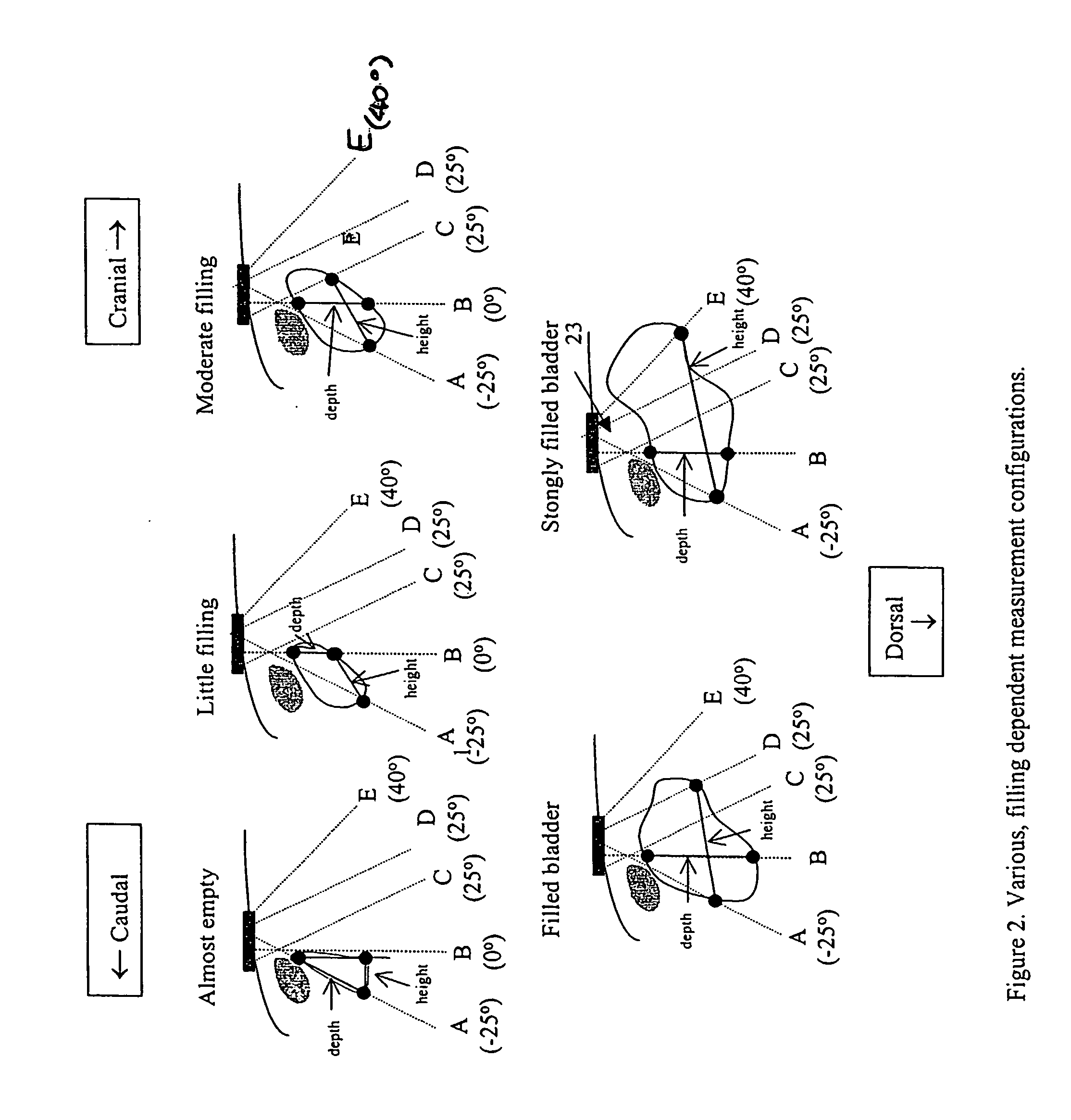Instantaneous ultrasonic measurement of bladder volume
a technology of ultrasonic measurement and bladder volume, which is applied in the direction of instruments, catheters, image enhancement, etc., can solve the problems of unnecessary catheterization, serious infection, uncomfortable patient situation,
- Summary
- Abstract
- Description
- Claims
- Application Information
AI Technical Summary
Benefits of technology
Problems solved by technology
Method used
Image
Examples
Embodiment Construction
[0062] The second version of the device is based on a different principle. The approach consists of using a single acoustic beam with a very wide width such that it encloses approximately the entire volume of the bladder when it is filled up. Such a wide beam width can be obtained using a single element transducer with a defocusing lens as drawn in FIG. 7 or a curved single element transducer.
[0063] The schematic principle of transducer positioning is illustrated in FIG. 7. The sagittal cross section through the bladder is shown. The cone like shape of the acoustic beam allows to encompass approximately the full bladder volume, and therefore any harmonic distortion detected in the echo signal returning from a region beyond the posterior wall of the bladder around depth W, would correlate to the amount of fluid contained in the bladder.
[0064] It has been demonstrated that the propagation of ultrasound waves is a nonlinear process. The nonlinear effects, which increase with higher i...
PUM
 Login to View More
Login to View More Abstract
Description
Claims
Application Information
 Login to View More
Login to View More - R&D
- Intellectual Property
- Life Sciences
- Materials
- Tech Scout
- Unparalleled Data Quality
- Higher Quality Content
- 60% Fewer Hallucinations
Browse by: Latest US Patents, China's latest patents, Technical Efficacy Thesaurus, Application Domain, Technology Topic, Popular Technical Reports.
© 2025 PatSnap. All rights reserved.Legal|Privacy policy|Modern Slavery Act Transparency Statement|Sitemap|About US| Contact US: help@patsnap.com



